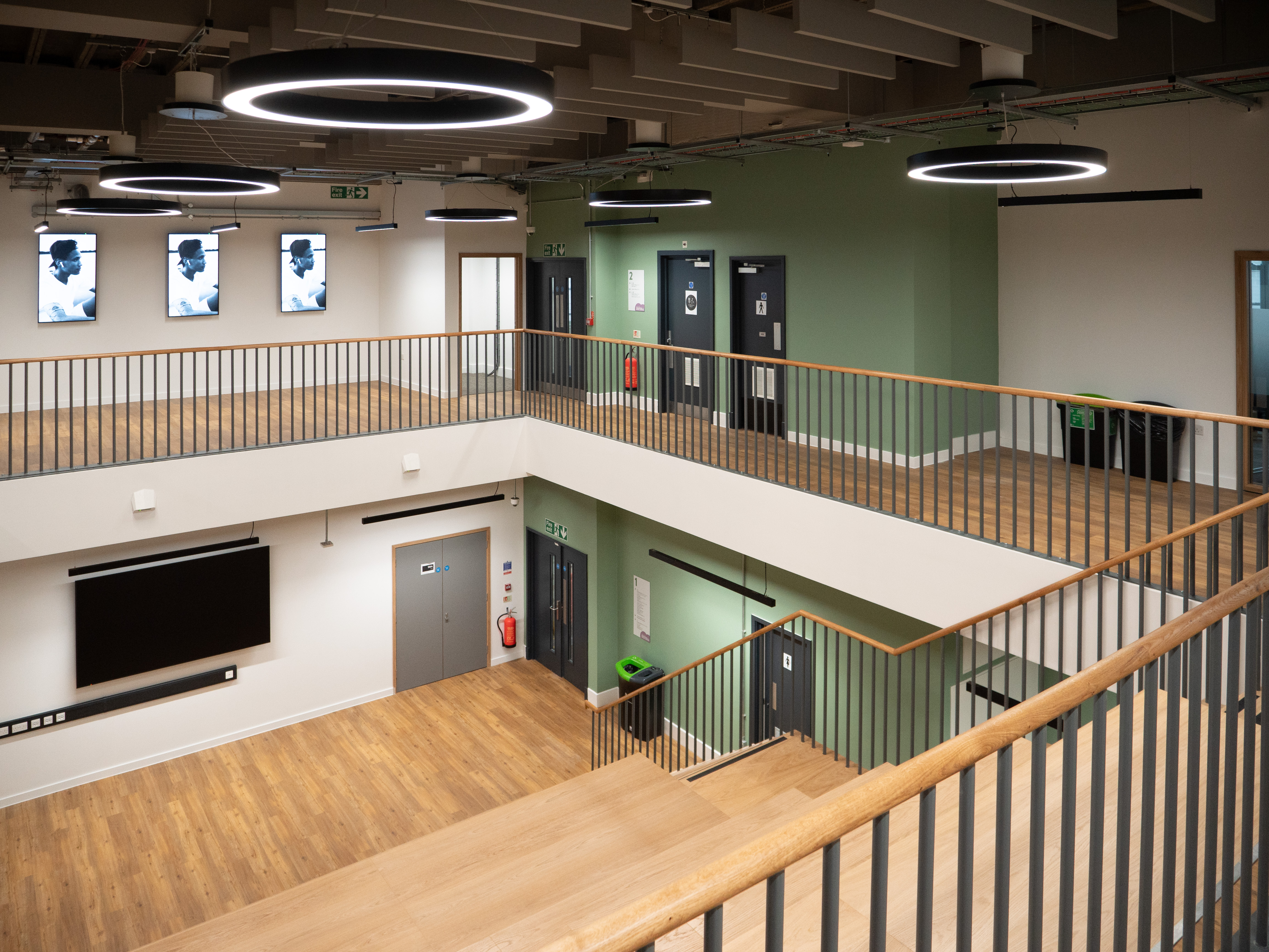Will Hunnam, Managing Director of Forza Doors, discusses compliance, which is key to delivering safe, high-quality, and sustainable commercial interiors.
Compliance forms the baseline for all successful projects, ensuring safety and both high design and construction standards. Without it, progress isn’t possible. Ever-evolving building regulations, stringent fire safety standards and sustainability targets make it increasingly challenging to move a project from concept to completion. However, the growing complexity of these requirements shouldn’t be a barrier, but an opportunity to create safe, premium-grade, commercial interiors.

Custom from the outset
For architects and designers, this interplay between form, function and regulation is a constant balancing act. How do you deliver the aesthetic and user experience expected, whilst meeting regulatory obligations?
At Forza Doors, we believe the answer often lies in bespoke products. When it comes to functional and aesthetic focal points, elements like doors and timber products, bespoke solutions can offer unrivalled design flexibility, technical rigour and environmental accountability.
Compliance plays a critical role throughout a project’s lifecycle – but for end users, it often goes unnoticed. Their experience is shaped more by how a space looks and functions rather than the technical standards that underpin it. These considerations are not unrelated – they’re interwoven from day one of a project.
Most end users will never see a fire test report or a smoke seal specification, they’ll only witness how a door looks, feels and performs in daily use. However, if the compliant elements of a space jar with its overall aesthetic, users notice. That disconnect can undermine the design integrity of a project.
It’s a tricky proposition; specifiers can find themselves forced to choose off-the-shelf components that meet regulations but compromise the visual or functional vision of the space. Fire doors that don’t match interior design schemes. Extra thick glazed screens that interrupt spatial flow or acoustic panels that add bulk or detract from tactility. These details matter to all parties. They shape not only how a space is experienced, but how the design itself is judged.
While building regulations apply to every part of a building, the challenge often lies in the more visible and visited high traffic areas – where design intent must align closely with strict compliance requirements. In these spaces, there can be a perceived tension between aesthetics and regulation.
With bespoke manufacturing, designers don’t have to make these trade-offs. A custom-made timber door can be engineered to meet rigorous fire, acoustic and structural standards without removing the finishes, profiles or dimensions that make a design distinctive.
Navigating regulatory complexity
UK Building Regulations are (appropriately) detailed, technical and constantly evolving; they provide specific measurements and requirements across fire resistance ratings, minimum dimensions, hardware configurations and smoke control features – to name just a few areas. Interpreting these regulations accurately is critical, but not always straightforward.
In the aftermath of the Grenfell Tower tragedy, the regulatory landscape rightfully shifted. The subsequent inquiry has led to the introduction of new regulations, including specific requirements for cladding, evacuation alert systems, as well as the appointment of an ‘accountable person’ for fire safety in residential buildings. With the establishment of the Building Safety Regulator (BSR) and the implementation of gateways, scrutiny at the design and planning stages has intensified. This places greater emphasis on tested performance, traceability, and early-stage product assurance.
The impact of this on the user experience shouldn’t be understated – if there are fire doors or accessible bathrooms that don’t fit with the rest of the design, it reveals that the design hasn’t been fully integrated.
This is where bespoke manufacturers offer an advantage. They understand how regulations apply differently across sectors and are equipped to handle the combination of requirements that could apply to any one project. Otherwise, designers and specifiers can be forced to choose from a range of incongruous products that simply aren’t complementary. Businesses such as ours work closely with architects to interpret these requirements. We often engage at RIBA Stage 2, which allows us to propose solutions that support the design intent while meeting – or exceeding – regulatory expectations.
The power of early collaboration
The value of a bespoke manufacturer isn’t just in the final product, but the knowledge that they can contribute along the way. Bringing in a bespoke manufacturer early changes that dynamic. It transforms the process into a genuine collaboration, where manufacturers become partners in problem-solving. We find that we often act as an extension of the design unit, helping navigate specification challenges and advising on product performance.
Third-party certifications and ongoing investment in primary testing ensure that performance claims are backed by evidence, not just words. Verified Environmental Product Declarations (EPDs) should be published for core product ranges, reflecting a commitment to transparency and leadership through rigorous testing.
Sustainability as standard
Sustainability is no longer a bonus, it’s expected. Clients, end users and planners alike are placing greater emphasis on low-impact, circular and responsibly sourced materials. Timber is naturally well-placed here, but not all timber products are created equal.
To support project teams in making informed decisions, we make verified EPDs available with clear data on embodied carbon, material sourcing, and lifecycle impacts.
By working with a bespoke manufacturer, project teams gain access to in-depth sustainability expertise and support in interpreting what certifications like LEED or BREEAM require at a product level — enabling them to clearly demonstrate how specific solutions contribute to those outcomes.
Timber, tactility and trust
Timber remains a favoured material across commercial, hospitality and high-end residential sectors. Its tactility, warmth and natural variation bring an organic quality to interior spaces that few other materials can match. But with that aesthetic appeal must come technical assurance.
Fire doors, partitions and acoustic elements are safety-critical — they must be properly tested and installed to perform as intended.
Ongoing research and development, coupled with rigorous product testing, continue to play a vital role in advancing safety and performance standards across the built environment. With the involvement of technical experts and specialists, the focus remains on expanding industry knowledge, refining compliance processes, and improving how key performance data is communicated. Regular testing – conducted throughout the year – offers valuable progress reports that provide clearer insight into material behaviour and regulatory requirements. By contributing to continuing professional development (CPD) initiatives and engaging with industry bodies, market-leading manufacturers are helping shape best practices and support more informed specification decisions.
Bespoke doors, trusted protection
Whether it’s a 30-minute fire door or a full-height glazed partition, compliance cannot be an afterthought. But nor should it be a design constraint. Bespoke manufacturing offers a route to reconciling performance with creativity, regulation with imagination.
Specifiers today face increasing demands – balancing aesthetic aspirations with stringent requirements around fire safety, acoustics, and sustainability. Navigating these pressures requires not just technical understanding but also access to solutions that align performance with design intent. The challenge lies in achieving compliance without sacrificing creativity or practicality.
As the built environment evolves, regulations are evolving alongside it. Meeting these shifting demands calls for early-stage collaboration and informed decision-making. When technical performance, regulatory knowledge, and design thinking come together, it’s possible to deliver spaces that are not only safe and sustainable, but also genuinely inspiring.
Designers don’t need to choose between safety and beauty; they need a partner that understands both.


